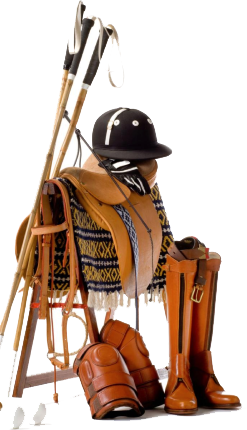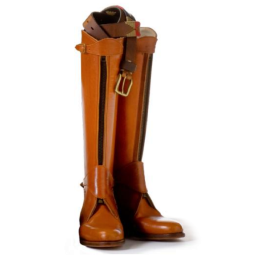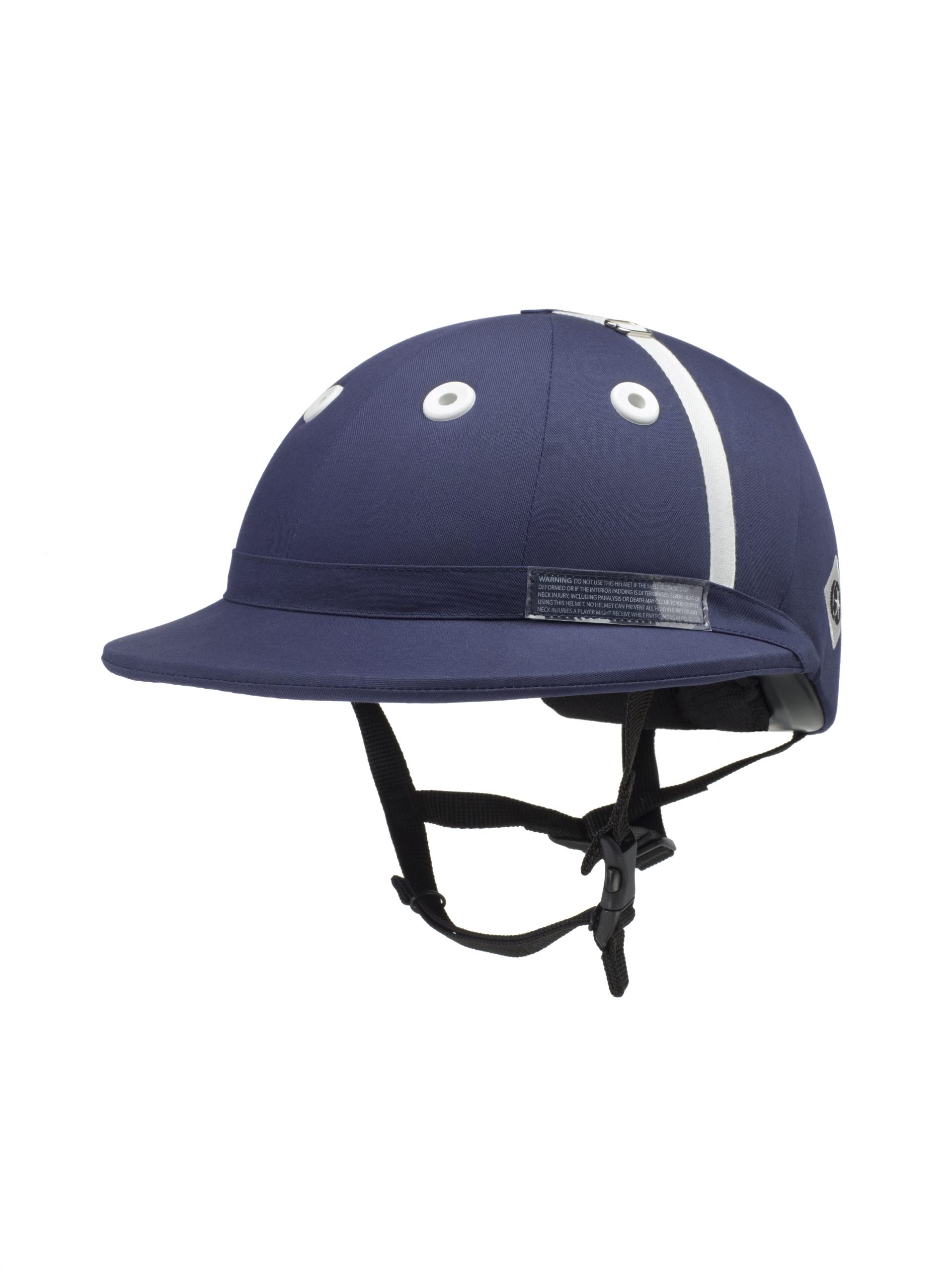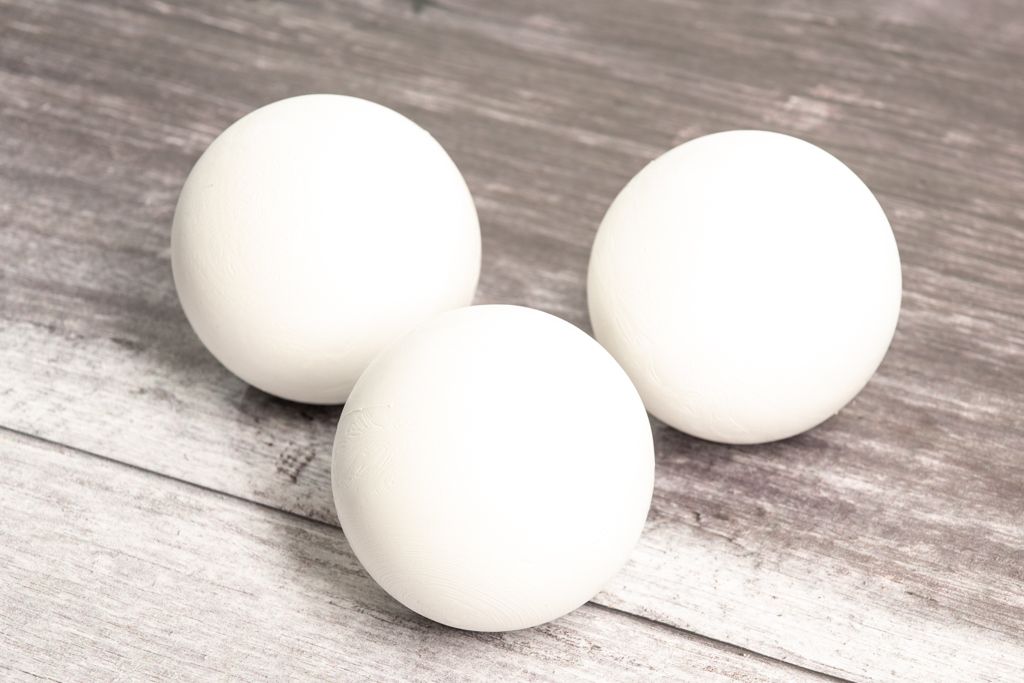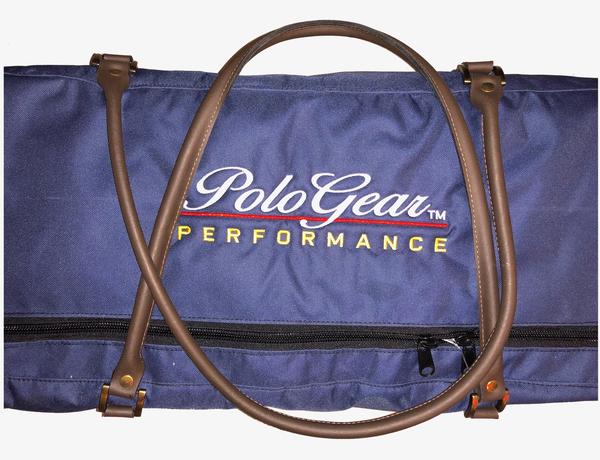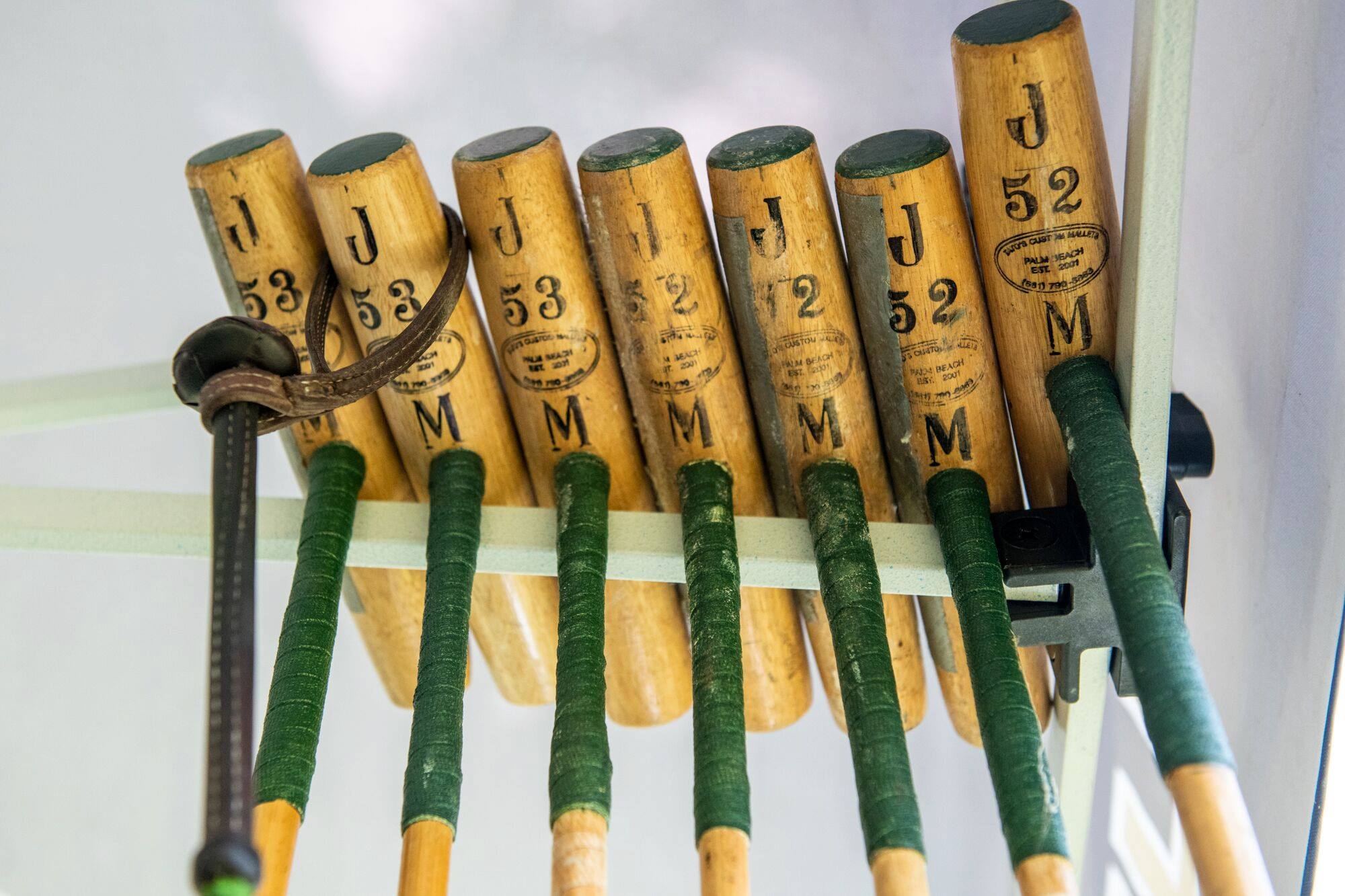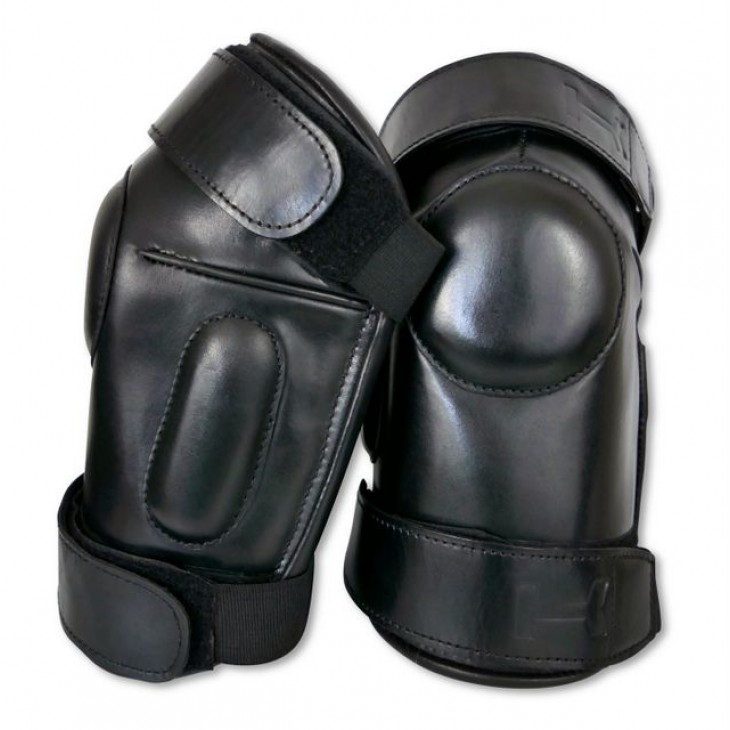About Our Sport


The oldest recorded team sport in known history, the first polo matches were played in Persia over 2500 years ago. Initially created by competing tribes of Central Asia, polo was taken up as a training method for the King’s elite cavalry. These matches could resemble a battle with up to 100 men to a side.
The modern age of polo began in the early 19th Century when British soldiers discovered the game in India and took up the sport, prompting its spread to the West.
To get the most out of your time at the Sarasota Polo Club, it helps to understand a little bit about our sport. Below are a few basics of the game to help you enjoy the match!
Game Basics
THE FIELD

Polo is played on a 10-acre grass field, 300 yards in length by 160 yards, which is the approximate area of 9 football fields. Goal posts are set eight yards apart on either end of the field. The object of the game is to move the ball downfield, hitting the ball through the goal for a score. Teams change direction after each goal. The team with the most scores at the end of the match is deemed the winner.
TEAMS

Two teams, made up of four players each, are designated by shirt color. The players wear tall boots, knee guards, elbow guards, and a helmet. The ponies wear protective bandages and boots to shield them from the ball and the mallet. By tradition, players wear white pants in tournaments. The mallet, made of a bamboo shaft with a hardwood head, is the instrument used to hit the polo ball.
POLO BALLS

The polo ball was formerly made of wood but is now plastic. In fact, the English word “polo” is derived from the Tibetan word “pulu,” meaning ball.
DIVOTS
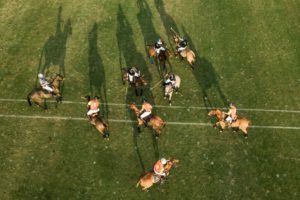
The surface of a polo field requires careful and constant grounds maintenance to keep the field in good playing condition. During halftime of a polo match, spectators are invited to go out onto the field to participate in a polo tradition called “divot stomping,” which was developed to not only help replace the mounds of earth (divots) that are torn up by the horses’ hooves, but to also afford spectators the opportunity to walk about and socialize.
THROW-IN & CHUKKERS

There are six periods, or “chukkers,” in a polo match. Each chukker is seven and a half minutes long. Play begins with a throw-in of the ball by the umpire at the opening of each chukker and after each goal. Only penalties or injuries may stop the time clock, as there are no timeouts or substitutions allowed (except for tack repair).
BASIC SHOTS
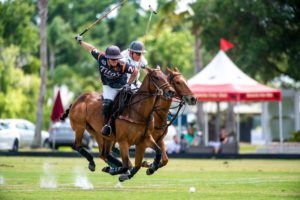
The four basic shots in polo are distinguished by the side of the pony on which the strokes, or shots, are made – that is “near-side” (left side of the mount) and “off-side” (right side of the mount). This creates the near-side forward, and back shot, and the off-side forward, and back shot. Shots can also be made under the pony’s neck, across his tail, or the difficult under-the-belly shot, all variations of the basic shots.
JERSEY NUMBERS
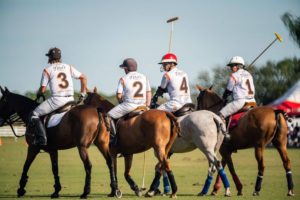
A team is made up of four players, each wearing a jersey numbered 1 through 4, which corresponds to their assigned position. No. 1 is the most offensive player, concentrating on opportunities for scoring. No. 4 is the defensive player, primarily responsible for defending his team’s goal. Usually, the most experienced and highest-rated players are at positions 2 and 3, with the pivotal player being No. 3, who must serve as an effective field captain, or quarterback. The No. 3 coordinates the offense, and passes the ball upfield to his teammates as they press toward the opponent’s goal. Each player is also assigned an opponent to cover on defense and must be prepared to shift offensive and defensive modes and to make any play that will benefit his team.
THE RULES

Similar to soccer, the objective of polo is to drive the ball downfield and between the opponent’s goalposts.
Although there are many rules to the game of polo, the primary concept to which all rules are dedicated is safety – for the player and his or her mount.
The right-of-way rule is defined by a player’s position relative to the direction of travel of the ball when hit. Once hit, an imaginary line is drawn from the player to the ball, and extended ahead of the ball in the direction it is traveling. This imaginary line can not be crossed by other players without incurring a penalty. In general, play will flow backward and forward, parallel to the imaginary line extended ahead of, and behind, the ball. This rule creates safe traffic patterns that enable the participants to play at top speeds and to avoid dangerous collisions.
The line of the ball may not be crossed except under special circumstances and only in such a way as to legitimately gain control of the ball. When a player has the line of the ball on his right, he has the right-of-way. This can only be taken away by “riding off” and moving the player off the line of the ball by making shoulder-to-shoulder contact.
Strategy and anticipation are two of the most important elements in polo and usually come with experience. For the spectator, keep an eye on the horses. The speed and athletic abilities of both the horse and rider are spectacular. All of these elements combined make the fast-paced action of polo one of the most exciting and demanding sports in the world.
PLAYER HANDICAPS
Each player is assigned an individual handicap on the ascending basis of -2 through 10. This Handicap reflects the player’s ability and his value to the team. The higher the handicap, the better the player (which is opposite to golf). There are only a few 10-goal players in the world.
The team handicap is the combined handicaps of the four players. The team with the lesser handicap is granted the difference in goals (or points) prior to the start of the match. For that reason, a match may well have a “score” prior to the start of the game based on team handicaps.
Player handicaps are evaluated and revised annually by the United States Polo Association (USPA). Handicapping is a subjective evaluation of the individual’s horsepower, game sense, hitting ability, and overall value to a team.
POLO PONIES

Horses used to play polo are commonly referred to as polo “ponies.” The polo ponies are central to the success of any team. They are primarily Thoroughbreds, often with previous race track experience, and considered the most athletic of equine performers because of the requirements to sprint, stop, turn and accelerate to open speed for up to seven and a half minutes in duration. Although they are called “ponies,” they are actually small horses (average height 15 to 16 hands high, where each hand is equivalent to 4 inches). Players change mounts after each chukker (and oftentimes in the middle of each chukker if a pony tires) due to the extreme demands that are placed on the ponies during the match. Therefore, a team usually brings a minimum of 24 horses available during the match.
Most horses can be trained to play polo, however training horses to learn the game should only be taken on by experienced polo players. Beginner and intermediate players are much better off buying an already trained polo pony.
Polopedia
Want To Know More?
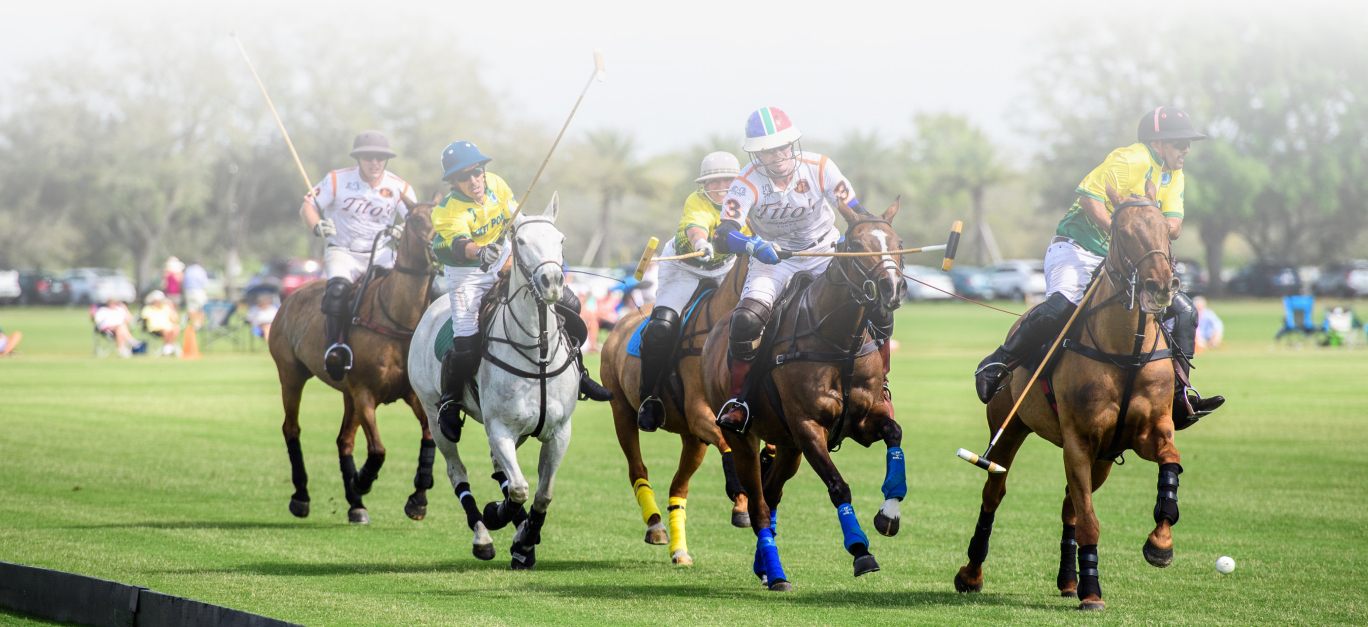
The Public is Always Welcome!
THANK YOU FOR JOINING US FOR THE 2025 SEASON OF SARASOTA POLO! STAY TUNED FOR INFORMATION REGARDING OUR 2026 SEASON. WE LOOK FORWARD TO WELCOMING YOU AS OUR GUESTS TO EXPERIENCE THE THRILL OF POLO AT THE SARASOTA POLO CLUB, “THE FASTEST GAME ON FOUR FEET!”
ABOUT SUNDAY POLO
During our published season dates, Sunday Polo matches are open to the public every Sunday at 1PM. Gates open at 10AM. Join thousands of fans each week during our upcoming 2026 Season for exciting polo action, opening parade, live national anthem performance, theme weeks, half-time entertainment, food, drinks and traditional divot-stomping.
General admission tickets, bleacher seats, reserved tailgates, reserved midfield premium seating, group tents, and VIP options are all available for Sunday Polo. Children 12 and under are free* (*for General Admission, Bleacher Seats, and Tailgate Spaces only). We recommend that you dress comfortably and for the weather. Remember, you will be walking on grass. Well-socialized dogs are welcome on a leash, as long as they are attached to their human at all times.
This event is family-friendly.
ABOUT THURSDAY SUNSET POLO HAPPY HOUR
Thursday Sunset Polo Happy Hour matches are open to the public on select Thursdays at 5:30pm during our 2026 Season. Gates open at 4:30PM. Join hundreds of fans each Thursday during the upcoming 2026 Season for exciting polo action, opening parade, live national anthem performance, half-time entertainment, food, drinks, traditional divot-stomping, and post-game live music!
General admission tickets, bleacher seats, reserved tailgates, reserved midfield premium seating, group tents, and VIP options are all available for Sunday Polo. Children 12 and under are free* (*for General Admission, Bleacher Seats, and Tailgate Spaces only). We recommend that you dress comfortably and for the weather. Remember, you will be walking on grass. Well-socialized dogs are welcome on a leash, as long as they are attached to their human at all times.
This event is family-friendly.
For more information, please visit our Frequently Asked Questions (FAQ).


